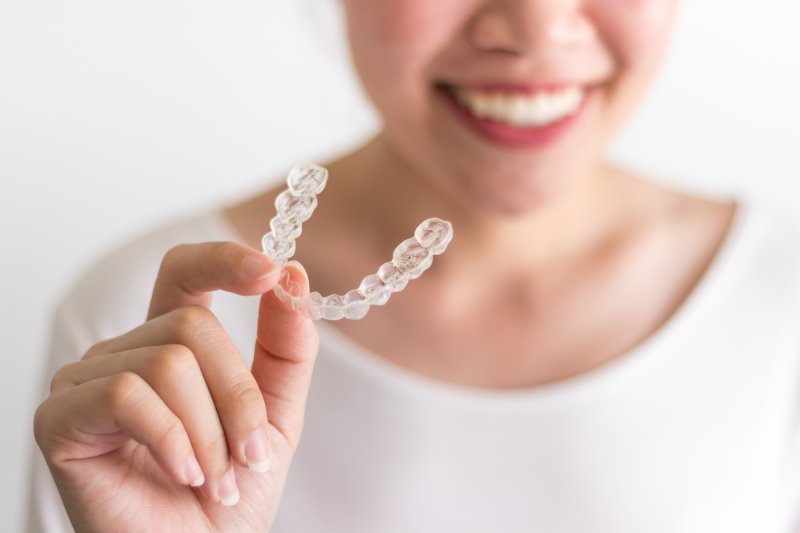
Desiring straighter teeth is becoming more popular among adults. While orthodontics is commonly viewed as something teenagers experience, older individuals are turning to clear aligners, like Invisalign, to address dental issues and achieve a more pleasant smile. However, with this increased interest in aligners come individuals who have existing dental restorations (i.e., dental crowns, veneers, dental bridges, etc.). Can the two work together successfully? Keep reading to find out.
Can Teeth with Dental Restorations Move with Invisalign?
Generally, yes. Of course, each case is different, so it will require a complete examination of your smile to determine the best course of action.
Whether you have dental crowns, veneers, or a dental bridge, your dentist will need to create a customized plan that works with the restoration to ensure results are still achievable. For example:
- Dental Crowns: You can wear Invisalign aligners while living with dental crowns, as the material will slip over the restoration like normal. One thing you will need to be mindful of, though, is removing your trays. Attempting to tug or pull on your aligners can cause your crown to pop off. Instead, you might consider purchasing an aligner hook or asking your dentist about safer ways to remove your trays when it’s time to eat or clean them.
- Dental Bridges: In most cases, wearing a dental bridge should not be a problem while undergoing Invisalign treatment. However, if your restoration is hindering your other teeth from moving properly into place, your dentist may need to rethink how to achieve the desired results. If necessary, the bridge can be removed so that your natural teeth can shift accordingly. Once finished with Invisalign, your bridge can be put back into place.
- Veneers: Invisalign is actually recommended instead of traditional braces when veneers are present. Why? Because brackets have a hard time adhering to the surface of veneers. With Invisalign, you only require clear plastic aligners, so they slide on over your veneers instead of requiring any kind of dental glue. However, should you require attachments to keep your teeth moving in the right direction, Invisalign may not be a suitable form of treatment since it will be difficult for these attachments to properly adhere.
Just because you have dental restorations doesn’t mean you have to give up hope on achieving a straighter smile. By working closely with your dentist, they can identify a solution that will not only ensure the safety and protection of your fully restored teeth but also help your pearly whites move into proper alignment once and for all.
About the Author
Dr. Julie Jaeyoon Jeong is originally from Seoul, South Korea, and brings years of proven experience in the field of dentistry. Earning her dental degree at Nova Southeastern University, College of Dental Medicine, she went on to obtain additional training and experience in orthodontics, becoming a certified Invisalign provider. At Lancaster Family Smiles, she provides personalized care to help patients who have dental restorations but are interested in straightening their teeth with Invisalign. If you have questions about your smile’s eligibility, visit our website or call (469) 729-7707.

 Se Habla Español
Se Habla Español
